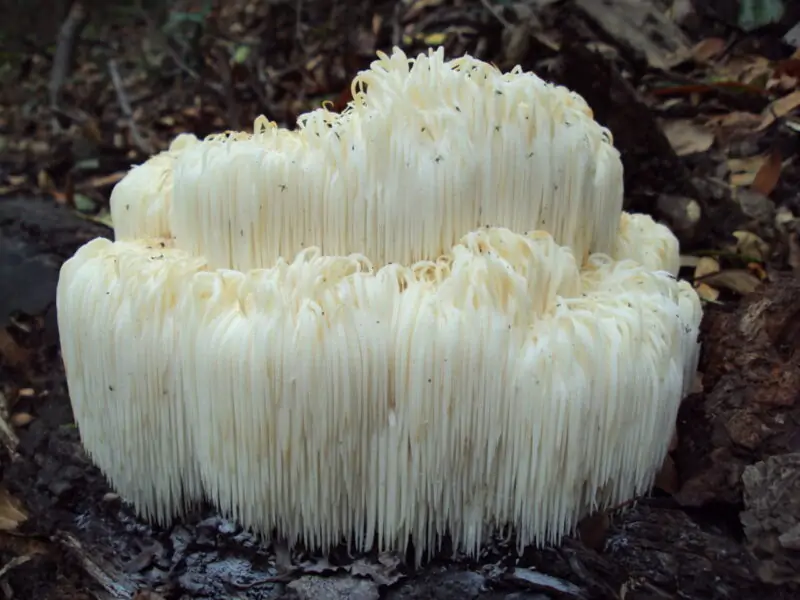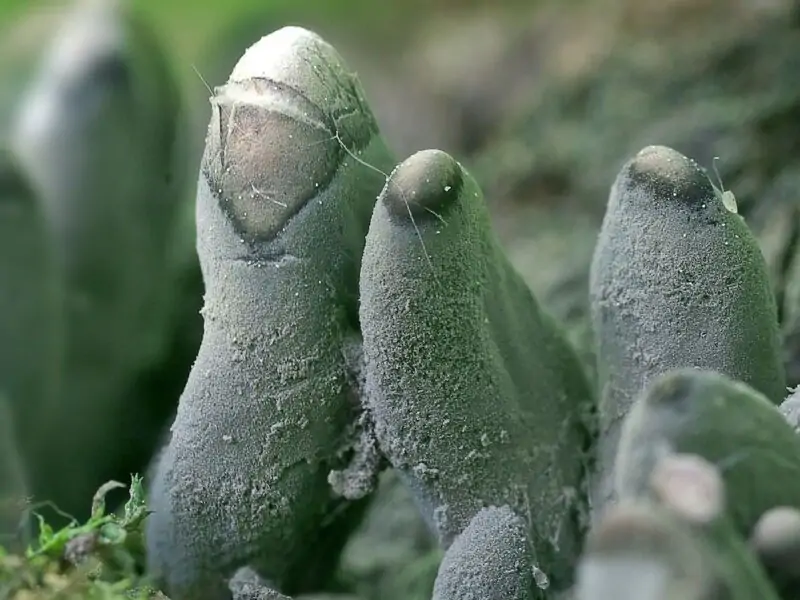Mushrooms That Grow on Trees: Exploring Fascinating Species of Mushroom

Hey there, folks! We’re about to embark on a journey through the fascinating world of mushrooms that grow on trees. Not many people know that, aside from the base of trees, mushrooms grow on trees too. Now, these aren’t your typical garden mushrooms; they’re an impressive lot, contributing to our ecosystem while showcasing their unique beauty and, often, delicious flavors. But wait, don’t think you’ve found dinner when you see mushrooms growing on a tree. Identifying mushrooms is very important; not everything found growing on a tree is edible, so read this article first.
Are you ready to discover more about these impressive fungi? Let’s dig in!
1. Oyster Mushroom

First off, let’s introduce the oyster mushroom, a favorite among chefs and foragers alike. This type of mushroom grows on both a living tree or dead hardwood trees, preferring the organic matter provided by tree species like the ash tree and oak trees. They have a mild, delicate flavor and a texture that adds a nice touch to a wide range of dishes. Plus, they’re packed with nutrients like protein, fiber, and a bunch of vitamins!
2. Chicken of the Woods

Next up, let’s explore the chicken of the woods, a wild mushroom that tastes as interesting as it sounds. They are typically found growing on conifers or oaks, bringing life to otherwise dead logs and stumps from downed trees. As a mushroom that’s high in protein, with a flavor reminiscent of chicken, they’re a popular choice for plant-based diets. Just remember to cook these wild mushrooms well before enjoying their unique taste.
3. Honey Mushroom

Sweet by name and sweet by nature, honey mushrooms are a favorite of many mushroom hunters. Growing in clusters at the base of living trees or on tree stumps, they’re easy to spot with their honey-colored caps. They’re edible and tasty and add a delightful touch to autumn dishes. But be careful; they have poisonous look-alikes. So that supposed honey mushroom you find growing on trees may be harmful to your health. As always, proper identification is a must! It’s also worth noting that honey mushrooms have a fascinating ecological role as they contribute to the natural process of rot and decay in the forest ecosystem.
4. Shiitake Mushrooms

Next, we have shiitake mushrooms, a fungus superstar not just for their taste but also for their potential health benefits. They grow on logs or stumps of deciduous trees, converting the wood’s lignin and cellulose into edible, delicious mushrooms. You can also find them on other tree types, such as chestnut, oak, and maple. Shiitakes are rich in several vitamins and minerals and have been studied for their potential health-boosting properties.
5. Lion’s Mane

Joining our lineup is the lion’s mane mushroom, a unique fungus with a mane-like appearance and a seafood-like taste. Often found on hardwood trees, they’re a delight to discover. Plus, these mushrooms are edible, and they’re good for your health. They’ve been the subject of research for their potential health benefits, particularly in boosting brain health. Add two or three mushrooms to your dish for a delightful seafood vegan surprise.
6. Artist’s Conk (Ganoderma applanatum)

This isn’t your typical mushroom. The artist’s conk, growing on dead or dying hardwood, is a natural canvas for creative souls. While not usually a choice for culinary pursuits, they’re interesting to behold and have been a popular mushroom for use in traditional medicine.
7. Birch Polypore (Fomitopsis betulina)

The birch polypore is a common mushroom species growing on birch trees. While not the tastiest, they have a long history in traditional medicine, often used as natural bandages or for sharpening tools. They’re an example of how versatile and beneficial this variety of mushrooms can be! Who knew fungi that grow on trees could also be used as tools?
8. Turkey Tail (Trametes versicolor)

The turkey tail mushroom is a tree fungus that wins hearts with its beauty and potential health benefits. Often found on decaying logs or tree trunks, they have a striking color pattern resembling a turkey’s tail. And while they’re not suitable for a fry-up, they’re frequently used in health supplements.
9. Velvet Foot (Flammulina velutipes)

Velvet foot mushrooms are a winter special, often found on dead tree trunks. Known for their velvet-like stems, they’re an edible delight, bringing warmth to your winter table. Interestingly, they’re also the commercial type of mushroom known as enoki, a favorite in many Asian cuisines!
10. Non Edible Dead Man’s Fingers (Xylaria polymorph)

Last but not least, meet the intriguingly named dead man’s fingers. This mushroom grows on dead wood, breaking down the organic matter. This mushroom gets its name from the dark, finger-like projections peeping out from the ground, giving it a rather eerie yet fascinating look. While they’re not edible, their unique appearance makes them a sight to behold during your woodland walks.
Growing Mushrooms on Trees: From Spore to Fruiting Body
Understanding Mushroom Growing Lifecycle
Imagine the tree trunk as a bustling city, and the mushrooms are its inhabitants. Mushrooms that grow on trees start their lives as tiny spores. These spores are the seeds of the mushroom world. They travel on the wind, and when they land on a suitable tree, they germinate and grow, feeding on the tree’s organic matter. Over time, these spores develop into a network of cells called mycelium, which eventually produce the mushrooms we see.
The Role of Organic Matter in Mushroom Growth
In the mushroom’s world, dead wood isn’t something to avoid but is a banquet of nutrients. As decomposers, mushrooms play a critical role in breaking down dead matter, turning a fallen tree into fertile soil. Organic matter from trees is vital for these fungi, providing them with the energy needed for growth.
Mushrooms That Grow on Trees FAQs
While many tree mushrooms are safe to eat, it’s crucial to know that’s not the case for all types of mushrooms that grow on living and dead trees. Some mushrooms may even be poisonous. If you find it growing in the wild and not in the supermarket, make sure to identify it correctly before putting it on your dinner plate.
Absolutely! Many tree-loving mushrooms like shiitake, oyster, and lion’s mane can be grown at home using mushroom cultivation kits. It’s an enjoyable hobby that’s also deliciously rewarding.
Identification is key. Use a reliable field guide or consult a local mycologist. There are also workshops and courses available on mushroom identification. Remember: When in doubt, it’s better to leave it out! There are also mushroom look-alikes that can be just as deadly, so watch out!
A tree trunk is like a mushroom’s home, and pantry rolled into one. It provides a place to live, and its organic matter serves as a source of food.
Conclusion
And that, my friends, wraps up our journey into the wonderful world of mushrooms that grow on trees. From the delicious oyster and shiitake to the eye-catching chicken of the woods and dead man’s fingers, each fungus has its unique charm. Whether you’re a culinary enthusiast, a nature lover, or a budding mycologist, there’s so much to appreciate about these fantastic fungi. But remember, always forage responsibly, identify accurately, and enjoy the wonders of the fungal kingdom!